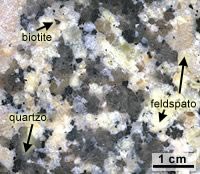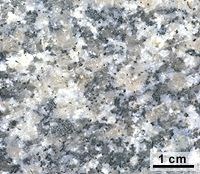O bastão de Saruman

Saruman à espreita lá em cima - Saruman is watching you on the top.
Obviamente que o bastão de Saruman é um nome inventado mas é aquilo que me fez me lembrar ao o ver desde abaixo, muito mais abaixo, quando iamos para outro lado. Nem sequer tínhamos previsto passar por aqui, o caminho não era esse, mas ficámos curiosos quando vimos esta curiosa formação.
Esta formação é um exemplo típico de meteorização do granito e que se pode ver por todas estas serranias.
A área do PNPG integra-se no Maciço Hespérico ou Maciço Ibérico que constitui uma das unidades estruturais da Península Ibérica e um segmento da Cordilheira Varisca da Europa. A edificação desta estrutura, pela actuação de forças compressivas, inicia-se no Devónico, há cerca de 380 Ma (milhões de anos), tendo-se prolongado até ao Pérmico (280 Ma) - orogenia Hercínica ou Varisca.
O Maciço Ibérico apresenta-se zonado, definindo-se habitualmente cinco zonas com características paleogeográficas, tectónicas, magmáticas e metamórficas distintas. A área do PNPG situa-se na Zona Centro-Ibérica (a zona mais interna da Cadeia Varisca). Esta zona é genericamente caracterizada pela existência de rochas muito deformadas e afectadas por elevado grau de metamorfismo e ainda pela predominância de rochas graníticas. |
 |
| Zonas paleogeográficas e tectónicas do Maciço Ibérico segundo Lotze (1945), modificado. ZC- Zona Cantábrica; ZAL- Zona Asturo-Leonesa; ZCI- Zona Centro-Ibérica; ZOM- Zona de Ossa-Morena; ZSP- Zona Sul Portuguesa. |
Assim, na área do Parque, à semelhança de toda a região Noroeste de Portugal, predominam rochas graníticas (ver mapa geológico) que se instalaram na crusta terrestre no decurso da orogenia Varisca. As rochas graníticas mais antigas (aprox. 320-310 Ma) afloram na Serra do Soajo, Serra Amarela, planalto de Castro Laboreiro e no extremo oriental da Serra do Gerês. Na restante área (Serra da Peneda e Serra do Gerês) afloram os granitos mais recentes que constituem um mesmo maciço intrusivo (maciço granítico de Peneda-Gerês), com cerca de 297-290 Ma de idade. Estes granitos destacam-se perfeitamente na paisagem dado que conferem àquelas serras um relevo mais vigoroso e desnudado do que a área circundante.
O granito é quase sempre sólido (sem estrutura internas), duro e resistente, sendo por essas qualidades usado como pedra para a construção civil. A densidade média do granito situa-se entre 2,651 e 2,75 g/cm3. Por facilidade aqui é considerado e por arredondamento uma densidade de 2,7 g/cm3
A palavra "granito" tem origem no latim granum, um grão, em referência à textura da rocha. A composição mineralógica dos granitos é definida por associações muito variadas de quartzo, feldspato, micas (biotite e/ou moscovite), anfíbolas (sobretudo horneblenda), piroxenas (augite e hiperstena) e olivina. Alguns desses constituintes podem estar ausentes em determinadas associações mineralógicas, anotando-se diversos outros minerais acessórios em proporções bem mais reduzidas. Quartzo, feldspatos, micas e anfíbolas são os minerais dominantes nas rochas graníticas e afins.
Os feldspatos (microclina, ortóclase e plagióclases), são os principais condicionantes do padrão cromático das rochas silicáticas, conferindo as colorações avermelhada, rosada e creme-acinzentada a estas rochas.
A cor negra variavelmente impregnada na matriz das rochas silicatadas, é conferida pelos minerais máficos (silicatos ferro-magnesianos) sobretudo anfíbolas (hornblenda) e micas (biotite), chamados vulgarmente de "carvão".
Oa três tipos de granito aflorantes na área do PNPG apresentam texturas distintas:
 |
 |
 |
|
Granito do Gerês
porfiróide de grão grosseiro a médio
|
Granito de Paufito
porfiróide a inequigranular de grão médio
|
Granito de Carris
granular de grão fino, por vezes porfiróide
|
|